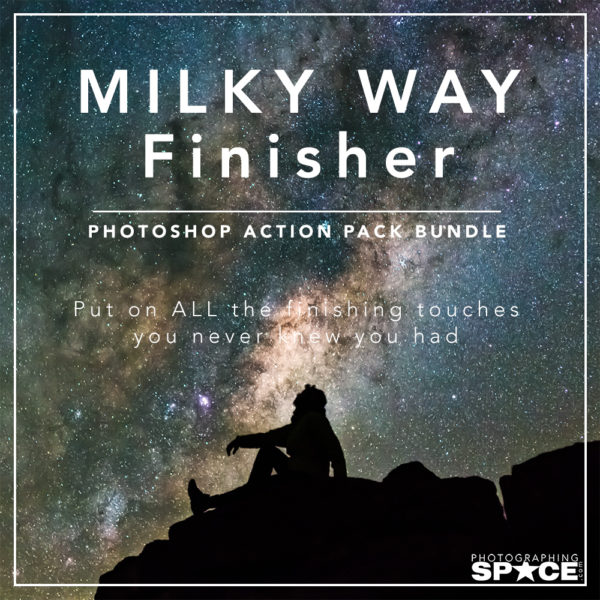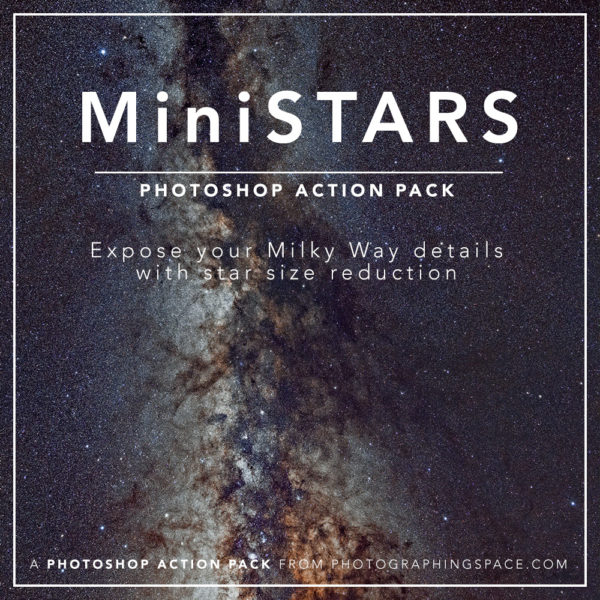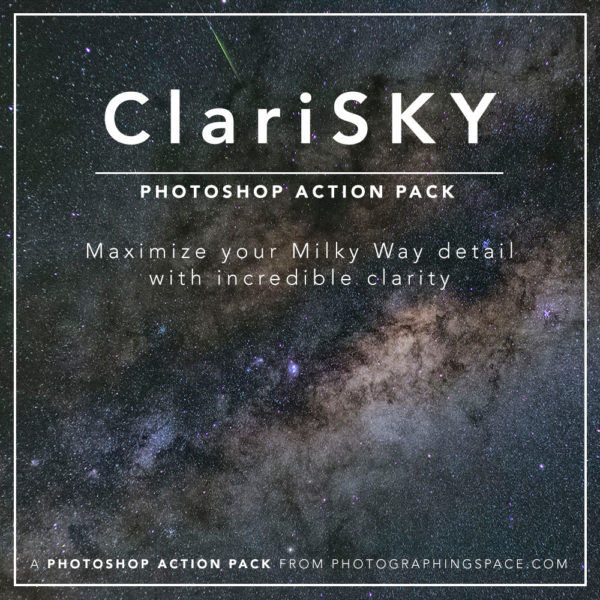Just like your laundry — keep your whites white!
White balance is colour temperature, measured in degrees Kelvin (K). In its simplest explanation, white balance is an adjustment to ensure that the colour in your photos are accurate to how they appear in real life. It is the removal of unrealistic colour casts in the image.
If an object appears white in real life, but has a blue or yellow tint in your photo, the white balance needs to be adjusted in order to render the white as white in the photo — which then also calibrates the colour of the entire photo.
To achieve the correct white balance, one has to take into account the colour temperature of the light source illuminating the scene, i.e. – the warmth or coolness of the light illuminating the scene.
What this means for wide field astrophotography is that shoot location and sky conditions will dictate the white balance selection in your images, which it’s why it’s important to know how to manually set the white balance.
Cameras come with various WB presets, which are fine to use, but only when you’re shooting raw.


Thankfully, the white balance can easily be changed in post production if you shot raw.
If you’re only shooting to JPEG instead (which we don’t recommend for astrophotography), it’s essential that you select the correct white balance while shooting.

White balance for night photography
Daylight (~5200K) is nearly always too warm for night sky photos. Generally cooler settings of between 3200-4800 are used for astro photos, depending on your location and environment.
In light polluted skies, the excess ambient light reflecting off the atmosphere creates a warm glow to the sky, therefore in urban areas a lower (colder) setting around 3,400-3,900K would be more suitable. In darker skies, settings of 4,000+ will yield better results.
To find the best WB for your photo, start with the suggestions above and shoot test photos in increments of 100, adjusting either cooler or warmer depending on your location and the desired look of the image.
Remember, always photograph in RAW!
We’ve compiled some examples of what you can expect in dark skies vs. urban light-polluted skies. Choose wisely!
White balance setting examples, shot in darker skies

Urban light-polluted night-sky photography white balance examples
While cool is cool and warm is warm, the difference that artificial light makes in the final image in regards to colour temperature is quite different to what it looks like in darker locations away from the city lights.








Nice Tutorial…. Clear Skies….
Thanks for the artice, bit by bit, I am starting to understand how astrophotography works, do you have any experience Pentax star trailer, I am working with it now but need a lot of practice.
Thanks for the comment. I unfortunately don’t know about the Pentax Star Trailer. I tried doing some quick research, but can’t find much on the subject. Is it related to the Pentax K3 II with Astro Tracer?
Thank you for the tutorial! I’m getting ready to try shooting a galaxy for the first time tomorrow (so far, I’ve only done lunar and planetary work) and I’m in the process of trying to get the right settings for my camera. I just tried to adjust the white balance and was hoping to set it between 3600-3800 (light polluted skies in the Philadelphia suburbs), but when I went to manually adjust them, the choices I were given were not temperatures, but rather “Incandescent”, “Fluorescent”, “Direct sunlight”, “Flash”, “Cloudy”, “Shade” and “Preset manual”, which then leads to “Measure” and “Use photo”. If I click on “Measure”, it asks me if I want to overwrite existing preset data and if I select “Use photo” it shows me a white photo that I click on or gives me the option to select another. I’m confused. I have a pretty low-end Nikon – the D3300. Do you have any suggestions as to which setting would work best for me? Thank you in advance!
Hi Chris, if you’re shooting to RAW format – you need not worry about the White Balance when acquiring. When you process your photo you’ll be able to apply colour correction in post production.
Good to know – thank you!
The simplest (and BEST) explanation of WB! I especially love the pictures depicting the spectrum of WB settings! Thanks
Thanks for the comments, Sam! Happy it helped you out!
Cheers,
Cory
Thank you for taking the time to assist us. Your effort is really appreciated.
Thanks Tanja-
Nicely done and very helpful article. I am a newbie to astrophotography and this will help me put my “toe in the water”.
Charles
Thank you for the great article. I use Kelvin when taking my night sky pictures. I usually experiment back and forth. But this clarifies a lot.
Hi thanks for the lecture. So I do more of modeling and wedding photography which is usually with flash and strobes and in the studio. I use a Nikon D810 camera and I have been struggling with getting the perfect look. Like when I shoot my model on a grey seemless paper background, the background turns out almost white. Please help
Sorry, I can’t help with that, I can only help you with astrophotography…
Cheers,
Cory
Very good and Interesting article Tanja. In particular your pointing out that “White balance is colour temperature, measured in degrees Kelvin (K)”.. then followed up with your WB preset settings and their associated values in (###k) that I found very helpful. I also like your “White balance for night photography” example image breakdowns for both dark sky and urban light-polluted locations depicting the suggested white balance ranges depending on the associated lighting conditions one could be shooting under. Your WB suggested range of 3,400-3,900K in light polluted areas is something I haven’t really tried dropping down to yet … Until now! Concise and to the point. Thank you.
Do the results of adjusting the white balance at the time of photo look better than when you do it post production even if you shoot RAW?
thanks- great explanation.
[…] example, understanding the correct white balance settings is crucial for capturing the true colors of the night sky in […]
Just to clarify, warmer colours are lower in the temperature range, not higher. For example, 2700k is much more yellow (warmer) than 5000k with appears more white (cooler). If you enjoy the yellows and unique colour saturation that the Milky Way can show, leaning towards warmer colours will help to make those colours pop. Choosing a colour that’s too cool, closer to 5000k, will result in a mostly white star landscape and may not have the artistic pop that some astrophotography captures.
Thank you Tanja for this helpful page! I used your examples to estimate a proper WB (ended up choosing 4200K) for aurora photography in a low-latitude, light-polluted area, and the results were balanced exactly as I had hoped. Given the pinkish-purplish-reddish hues of the phenomenon, I wanted to make sure that was preserved in my exposures, and not lost in the background by choosing too warm a balance; at the same time not wanting it to look artificially warm by choosing too cool a balance. And I definitely didn’t want the camera choosing the WB automatically for each exposure, as I assembled my sequence into a time-lapse. Cheers!
[…] with white balance presets can be beneficial when shooting in RAW format since adjustments are possible in […]
[…] white balance settings can enhance the visibility of celestial objects by bringing out yellow tones that might otherwise be […]